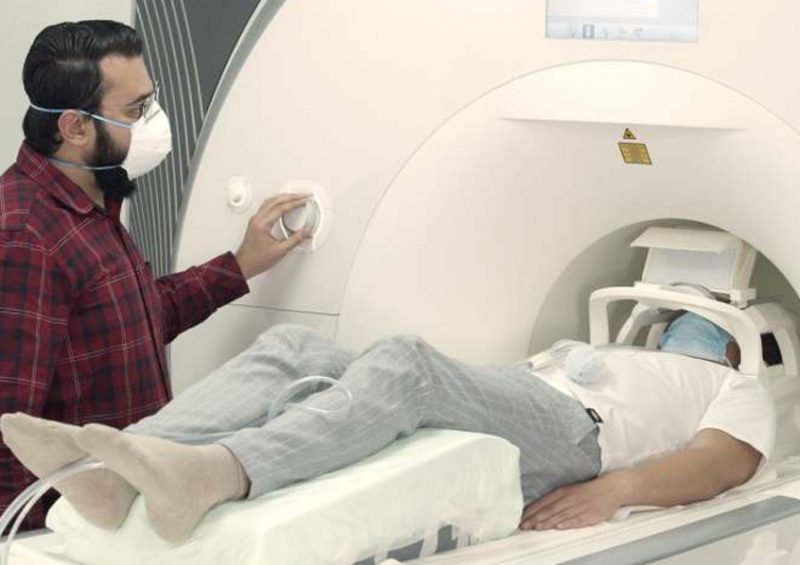Ford brain research could hold the key to more quickly identifying when drivers switch off at the wheel
Ford is working with neuroscientists to develop a faster and more effective way to detect when drivers are tired, distracted or not concentrating. Driver fatigue may be a contributing factor in up to 25 percent of fatal and serious road incidents.
Global motor company Ford is pioneering a new brain research that could ultimately lead to a faster and more accurate way to detect when a driver is starting to switch off behind the wheel.
 Driver fatigue is a serious concern in the global trucking industry because of truck drivers usually do long-haul drive to transport goods between cities and borders.
Driver fatigue is a serious concern in the global trucking industry because of truck drivers usually do long-haul drive to transport goods between cities and borders.
Alerting drivers who are tired or distracted far earlier could help keep drivers, passengers and other road users safe, with driver fatigue cited as a contributing factor in up to 25 percent of fatal and serious road incidents. A survey shows that 40 per cent of drivers in Europe do not follow the recommended practice of taking a break every two hours on long journeys.
“The brain processes huge amounts of information when we are driving, but that may change as driver assistance technologies do some of the driving for us. Drivers also get tired and their minds can wander. Identifying more quickly when this happens could be of critical importance,” said Stefan Wolter, research engineer, Research and Advanced Engineering, Ford of Europe.
Working with neuroscientists, Ford is hoping that by identifying the brain responses that reveal lapses in concentration, it may then be possible to match the scans to their physical manifestations – such as changes in heart rate or breathing. Should a loss in concentration become apparent, for example if a change in heartbeat variability was detected via wearable technology, the vehicle could then alert the driver.
Unique research project
 As driver assistance technologies offer increasing levels of support to those behind the wheel, it remains crucial drivers stay alert and do not become overly reliant on assistance technologies.
As driver assistance technologies offer increasing levels of support to those behind the wheel, it remains crucial drivers stay alert and do not become overly reliant on assistance technologies.
Ford is conducting this research on mapping brain patterns to driver’s reactions with Uniklinik RWTH Aachen, in Germany. The testing involves participants completing a driving simulation while their brain activity is scanned by an MRI machine. A specially positioned mirror enables the participants to see the simulation on the screen.
The scenario, designed using gaming technology, involves a three-lane motorway at night where a vehicle in the middle lane brakes suddenly and the participant has to take over and move the car to the left or right, using a handheld device. The participants are also prompted by engine sounds to indicate which lane it is safe to move to.
The MRI machine scans the brain before and during these actions, while the researchers measure how quickly the participant reacts and if they make the right decision, and monitor changes to heart rate, breathing rate and other physiological measures.
“We believe that by capturing this data we could one day be able to generate unique physiological driver fingerprints so that drivers of the vehicles of the future can be prepared to react and to intervene immediately in case it is required,” said Professor Klaus Mathiak M.D. Ph.D., head of Psychoneurobiology and lead consultant for Psychosomatic Medicine, Uniklinik RWTH Aachen.
For more than a decade, a coffee cup symbol displayed in the dashboard cluster has highlighted to Ford drivers that they may be showing signs of fatigue and should take a break. Now, this unique research project could take driver monitoring an important step further and help ensure a smooth transition to driving vehicles with advanced driver assistance features.
Based in Dearborn, Michigan, Ford also manufactures trucks and is considered one of the largest international heavy duty truck manufacturers in the world. The company produces a range of vehicles including tractors, construction trucks and distribution trucks weighing over 16 tons.
Ford Trucks combine more than half a century of design and production experience with expertise in market-specific product development, to engineer the main components of its vehicles, including the all-new engines. The company currently operates across Europe, the Middle East, Africa, Russia and the CIS. Source: www.media.ford.com
Driver Fatigue and Road Accidents Factsheet
Driver fatigue is a serious problem resulting in many thousands of road accidents each year. It is not possible to calculate the exact number of sleep related accidents but research shows that driver fatigue may be a contributory factor in up to 20% of road accidents, and up to one quarter of fatal and serious accidents.
 These types of crashes are about 50% more likely to result in death or serious injury as they tend to be high speed impacts because a driver who has fallen asleep cannot brake or swerve to avoid or reduce the impact.
These types of crashes are about 50% more likely to result in death or serious injury as they tend to be high speed impacts because a driver who has fallen asleep cannot brake or swerve to avoid or reduce the impact.
Sleepiness increases reaction time (a critical element of safe driving). It also reduces vigilance, alertness and concentration so that the ability to perform attention-based activities (such as driving) is impaired.
The speed at which information is processed is also reduced by sleepiness. The quality of decision-making may also be affected.
It is clear that drivers are aware when they are feeling sleepy, and so make a conscious decision about whether to continue driving or to stop for a rest. It may be that those who persist in driving underestimate the risk of actually falling asleep while driving. Or it may be that some drivers choose to ignore the risks (in the way that drink drivers do).
Crashes caused by tired drivers are most likely to happen:
· on long journeys on monotonous roads, such as motorways
· between 2am and 6am
· between 2pm and 4pm (especially after eating, or having even one alcoholic drink)
· after having less sleep than normal
· after drinking alcohol
· if taking medicines that cause drowsiness
· after long working hours or on journeys home after long shifts, especially night shifts
A study conducted by a traffic safety foundation in the US investigated the relationship between the amount of sleep a driver has had and their likelihood of a collision. The study, being the first of its kind, looked at US road data in the form of the National Motor Vehicle Crash Causation Survey, in order to assess the contributory factors of the crash and how much sleep the driver had had recently.


